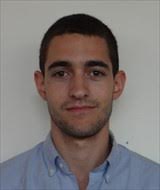Those ‘Messiah Is Here!’ signs popping up in New York? Here’s who’s behind them.
The signs espouse the beliefs of a fringe Chabad offshoot — but were hung by students from the flagship Chabad yeshiva
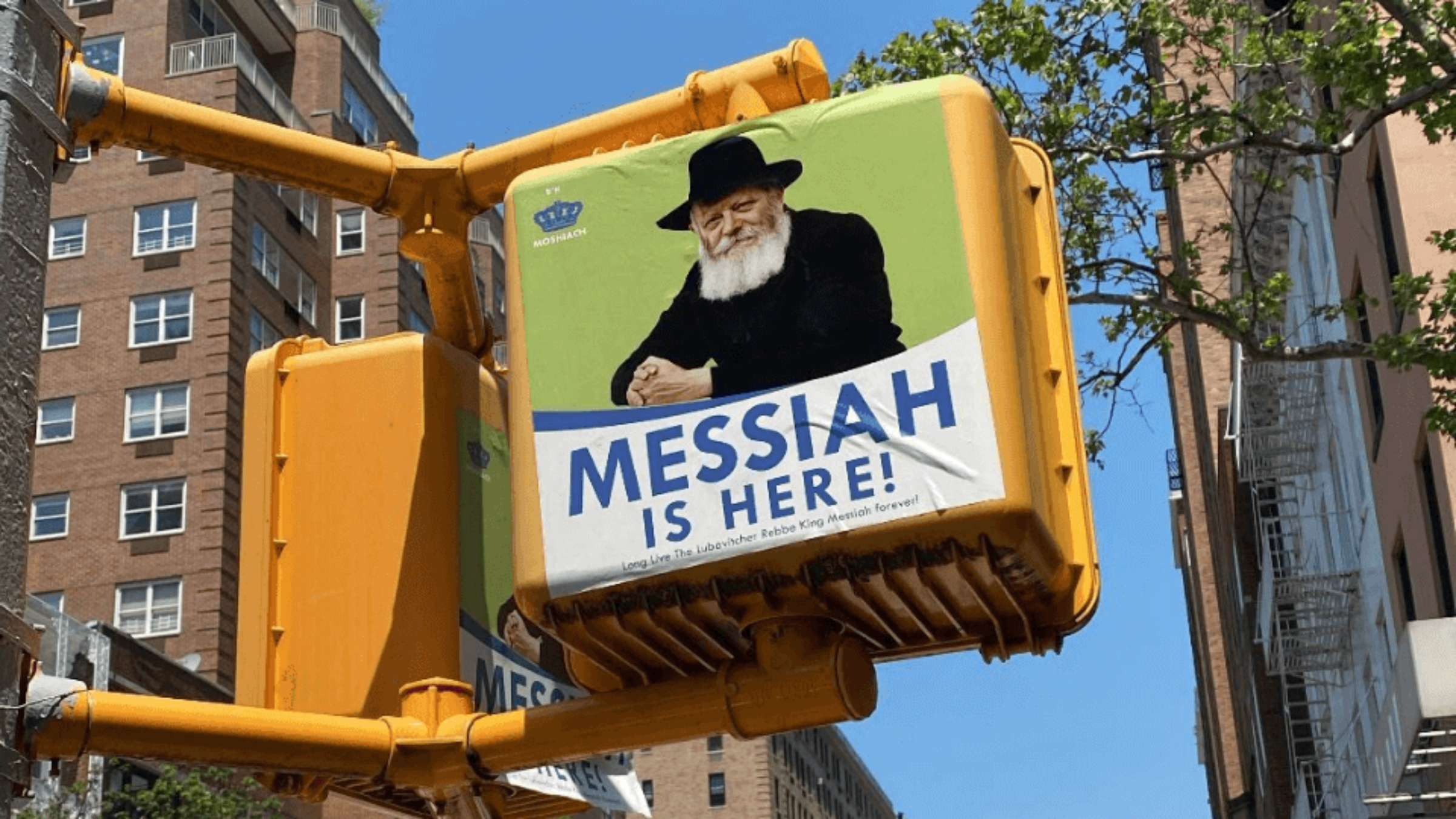
In certain parts of New York, the signs are inescapable. Photo by Gaby Grossman
Almost every night for the past few months, a nondescript crew of yeshiva bochurs has fanned out across New York City, armed with nothing more than MetroCards and buckets to stand on.
The following morning, the familiar visage of Rabbi Menachem Mendel Schneerson, the seventh Lubavitcher Rebbe, peers out at harried commuters from bright green signs hung in a few new places, usually on the back of pedestrian walk signals. Below the picture of the man-turned-myth known to many simply as “The Rebbe,” the signs proclaim, in no uncertain terms and without qualification:
“MESSIAH IS HERE!”
The Schneerson posters have become inescapable in some New York City neighborhoods — Brooklyn and Manhattan in particular — but they provide no context to the image and those three words, leaving their provenance and meaning a mystery. Are they advertisements for Chabad, the Jewish movement that Schneerson led and which still views him as its lodestar? Does Chabad believe that Schneerson, who died in 1994, is the Messiah? And if the Messiah is here, shouldn’t it be pretty obvious?
The answers to those questions depend on who you ask — even within the Chabad-Lubavitch movement, whose membership worldwide has been estimated at around 100,000. Yes, the Messianist branch of Chabad is considered fringe, and synagogues that tout Schneerson as the Messiah — in Hebrew, mashiach or moshiach — comprise a small minority and are not a formal part of the international Chabad network. But mashiach is itself an elusive concept in Judaism, and Chabad members’ beliefs on the matter don’t fit into a neat binary.
Put it this way: A spokesperson for the movement called the posters a “shame” — but it’s students at Chabad’s flagship yeshiva in Crown Heights who are putting them up.
A guerilla campaign
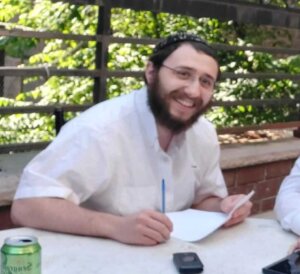
Mendel Shpindler, a 21-year-old self-starter originally from Montreal, is one of those students. He said they started putting up the signs about 10 weeks ago, following in the tracks of Messianist Chabad ad campaigns that date back to the early 1990s.
A few people going out each night, with little organization or planning, have already placed more than 6,000 of the bills, which fit neatly on the back of traffic signal boxes.
“It’s pretty much whoever has the energy to go and do it and take it on himself,” he said, adding that they have another 6,000 to go.
Shpindler is one of about 600 young men in their fourth year of the Chabad yeshiva cycle: three years’ full-time study in Israel followed by one at 770 Eastern Parkway, the iconic former Schneerson home in Crown Heights which now houses Chabad headquarters.
About 30 of them have contributed to the signposting effort, according to Shpindler; they passed a hat around to raise the few thousand dollars it cost to make the signs.
He’s firm in his belief that the Rebbe is the Messiah, and he believes that deep down, every other Chabadnik agrees with him.
“No one would say the Rebbe is not mashiach,” Shpindler said. “If you cornered them, they would tell you, straight up, ‘The Rebbe is mashiach.’ The question is whether to publicize that or not.”
By his own admission, not everyone in the crew was as fervent in their belief. An avowed meshichist, or Messianist, Chabad Jew, Shpindler’s views are on the radical end of the spectrum. For example, he believes Schneerson did not die at Mount Sinai Beth Israel hospital in Manhattan, but in fact is still alive and testing his followers “to see how strong we believe.”
But differences within the group regarding Schneerson’s present condition did not weaken their shared interest in spreading the word that he was mashiach.
The Lubavitchers (a Hasidic Jewish community) out these stickers all over the city. ?????????? Does not feel like the messiah is here, but u have 2 love their optimism !!! ? pic.twitter.com/G9go9dGf1c
— katie wright (@katiewr31413491) June 19, 2022
And though hanging posters on public property is illegal, so far, none has faced much resistance from law enforcement.
“We’ve had police tell us it’s illegal, don’t do it,” Shpindler said. “Some police ignore. And some were more like, ‘OK, what is this about?’ like they were interested in knowing. It’s not really enforced as a legal thing. And no one really cares about it too much.”
Support from the higher-ups was another matter entirely. Asked whether he thought the administration at 770 Eastern Parkway would approve of his mission, he said he thought a few would commend him, and others would try to cool his jets.
But he wasn’t doing it for them. He was doing it for his Rebbe.
‘A shame’
In the Chabad-Lubavitch mainstream, Schneerson, who led the movement from 1951 until his death in 1994, is larger than life, a mystical figure and a talisman of righteousness and religious devotion. His portrait hangs in every Chabad house. Legions of Chabad children are named after him or his wife, Chaya Mushka, and his compiled letters are ubiquitous in Chabad homes. In times of need, some Chabadniks will write a letter to the Rebbe and insert it randomly between the pages of one of the volumes. Whatever Schneerson is writing about on the pages where they placed the letter will provide a clue, they believe, as to how they should address their problem.
Opinion on whether Schneerson is the Messiah falls on a continuum among Chabad Hasidim. Some believe he will be, others believe he could be, and plenty say that while he had the potential to become the Messiah during his lifetime, it’s no longer possible. A small but vocal minority — Shpindler among them — claims he is now. And many are content to say they don’t know.
But the movement’s leadership has been eager to formally distance Chabad from the perception that Messianist belief in Schneerson is commonplace in its ranks. In Judaism more broadly, many believe the Messiah will come. But the notion that the Messiah has already arrived is widely considered heresy — and a lot like Christianity.
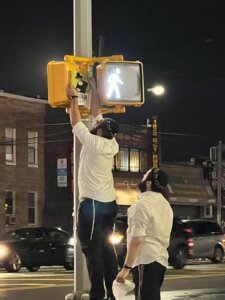
Told that students at 770 were behind the signs blanketing New York, Rabbi Motti Seligson, spokesperson for Chabad-Lubavitch headquarters, said there was no ban on such beliefs in the yeshiva. But he rejected with disappointment Shpindler’s contention that everyone in Chabad shares them.
“What a shame that this individual is spending his time on speculation that the Rebbe advised against, instead of internalizing the Rebbe’s vision and passion for a world truly transformed,” Seligson said, citing Schneerson’s immense corpus of teachings.
Instead of flyering neighborhoods, Seligson said, a student like Shpindler should be “committing his energies to the Rebbe’s actual directives about how to get there.”
The vast majority of Chabad centers in the United States are not associated with the Messianist offshoot. Messianist Chabads are not listed on the Chabad website or discussed in its publications, and Chabad-Lubavitch headquarters won’t send rabbis associated with that group on shlichut, or official outreach missions. That means the more than 700 Chabad houses on college campuses around the world should not be Messianist. (If you’re wondering whether you’ve attended a Messianist Chabad, one meshichist giveaway is a phrase — “yechi adoneinu” (long live our master) — recited at the end of daily prayer services.)
Nevertheless, yearning and striving for mashiach is a central concern of Chabad, a way of life developed by Schneerson in countless teachings. The Jewish outreach that is Chabad’s signature — free Shabbat meals, street-corner tefillin-wrapping stations — keyed Schneerson’s vision of bringing redemption closer, one mitzvah at a time. (They were also informed by the imperative of ahavat yisrael, or loving fellow Jews.)
‘A global thing’
Feeling the squeeze of rising rent, and inflation, and temperature, New Yorkers might greet the signs skeptically: the Messiah is here? Now?
Shpindler said that while the identity of mashiach is clear, the Messiah — that is, the revival of the dead, the great ingathering of Israel and the reconstruction of the Holy Temple — is a destination we’re still traveling toward.
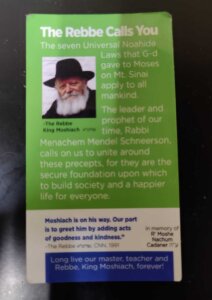
Among the prerequisites for reaching it, Shpindler says, is a cause the Rebbe sought to advance in his lifetime: the adoption of the seven Noahide commandments by non-Jews, which include prohibitions against cursing God and committing adultery. By using the word “Messiah” rather than moshiach on the signs, and through the mass distribution of business card-sized Noahide explainers in non-Jewish communities, Shpindler is hoping some gentiles will start observing them.
“We want them to be more of a global thing,” he said of the signs.
Of course, Christians picked their Messiah roughly 2,000 years ago. Shpindler says he’s not interested in converting them, but he wouldn’t hate to change a few minds, either.
Not that the signs provide a useful jumping-off point. Shpindler said he regretted that the posters, which one of the other students designed, lacked further instruction. Even without that, though, he felt they were accomplishing something important.
“There is this concept of just letting people know, getting into their knowledge, mashiach is here — period,” said Shpindler. “And know, this is the man.”
A message from our Publisher & CEO Rachel Fishman Feddersen

I hope you appreciated this article. Before you go, I’d like to ask you to please support the Forward’s award-winning, nonprofit journalism so that we can be prepared for whatever news 2025 brings.
At a time when other newsrooms are closing or cutting back, the Forward has removed its paywall and invested additional resources to report on the ground from Israel and around the U.S. on the impact of the war, rising antisemitism and polarized discourse.
Readers like you make it all possible. Support our work by becoming a Forward Member and connect with our journalism and your community.
— Rachel Fishman Feddersen, Publisher and CEO



